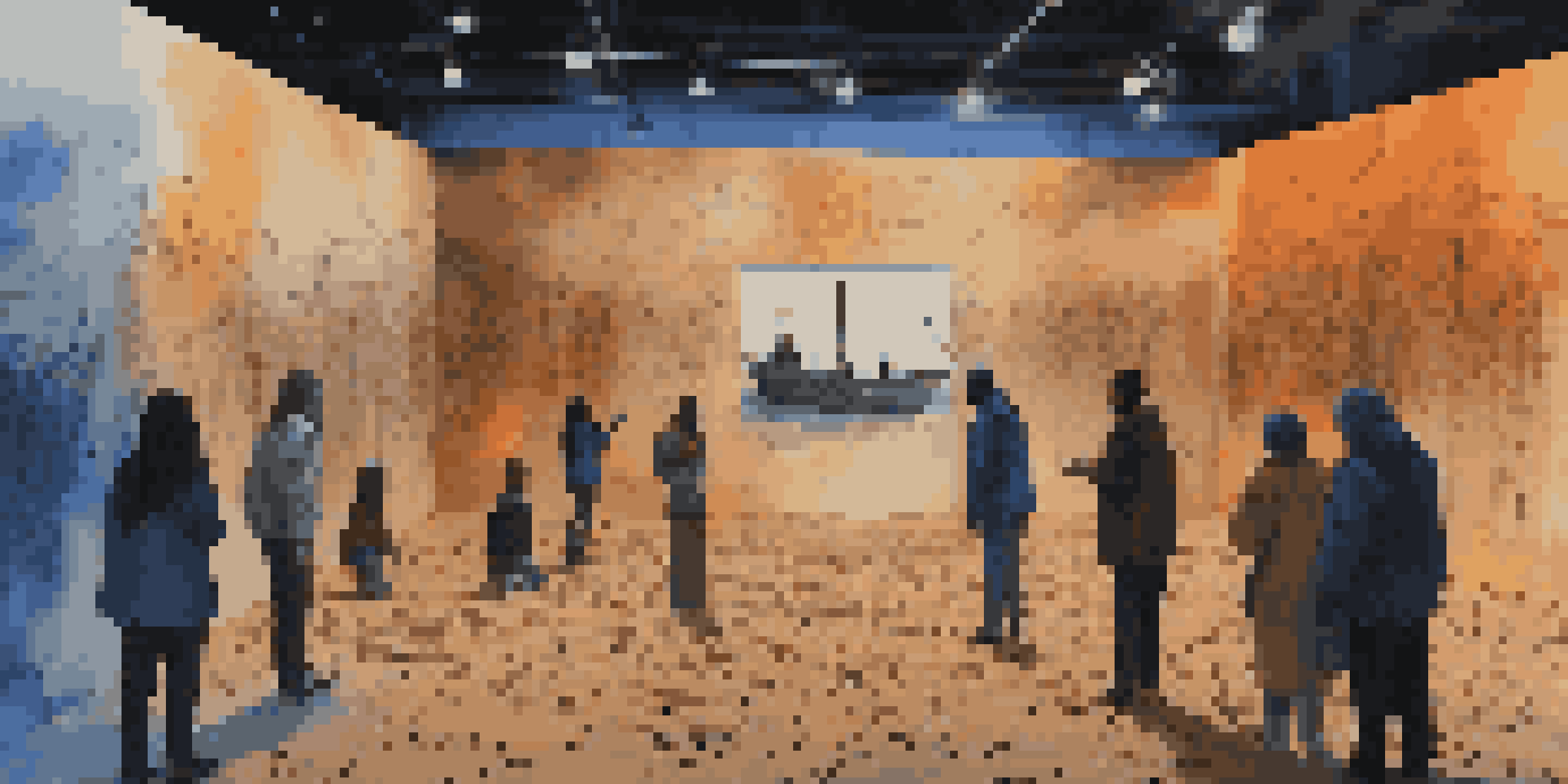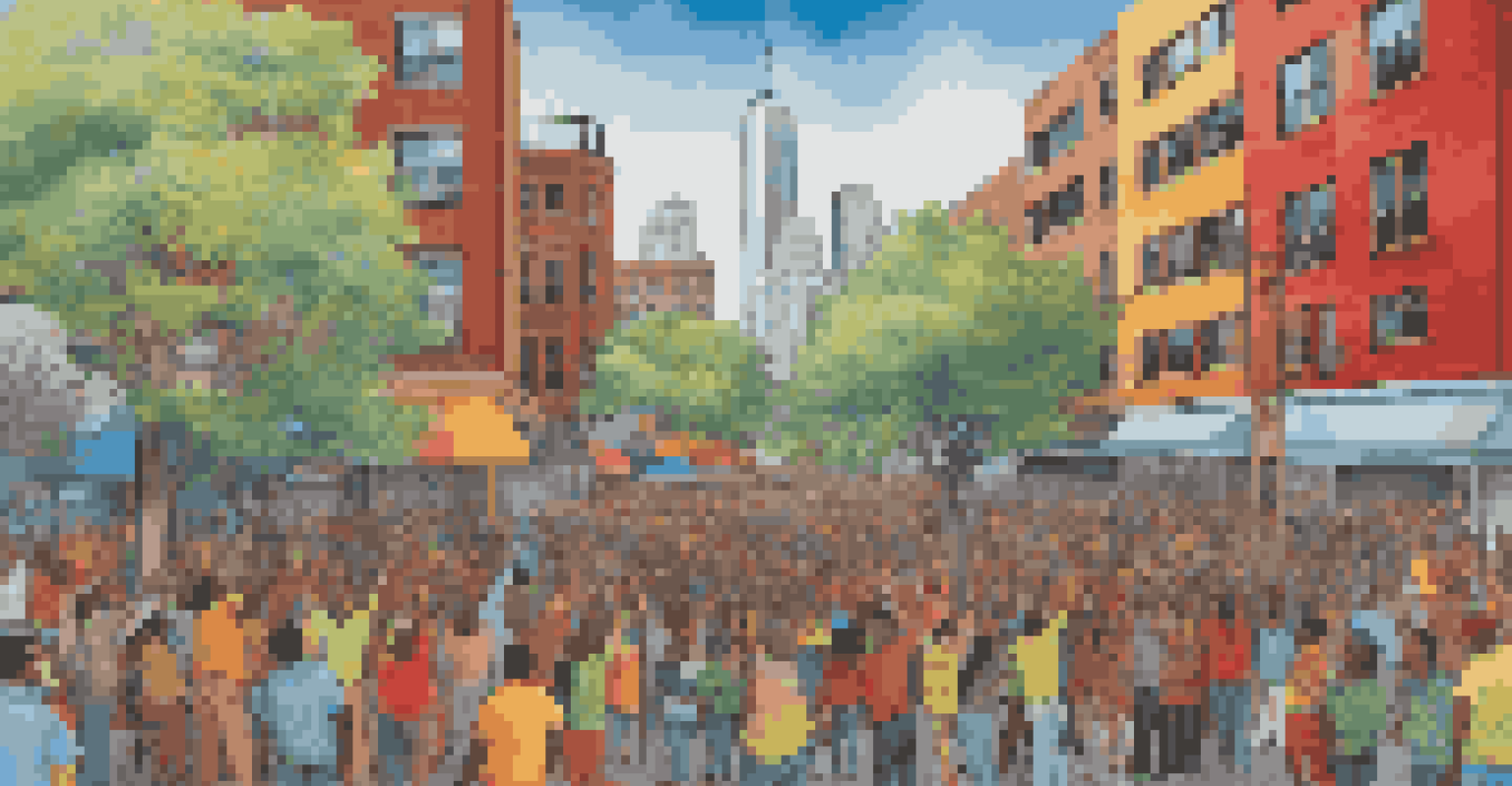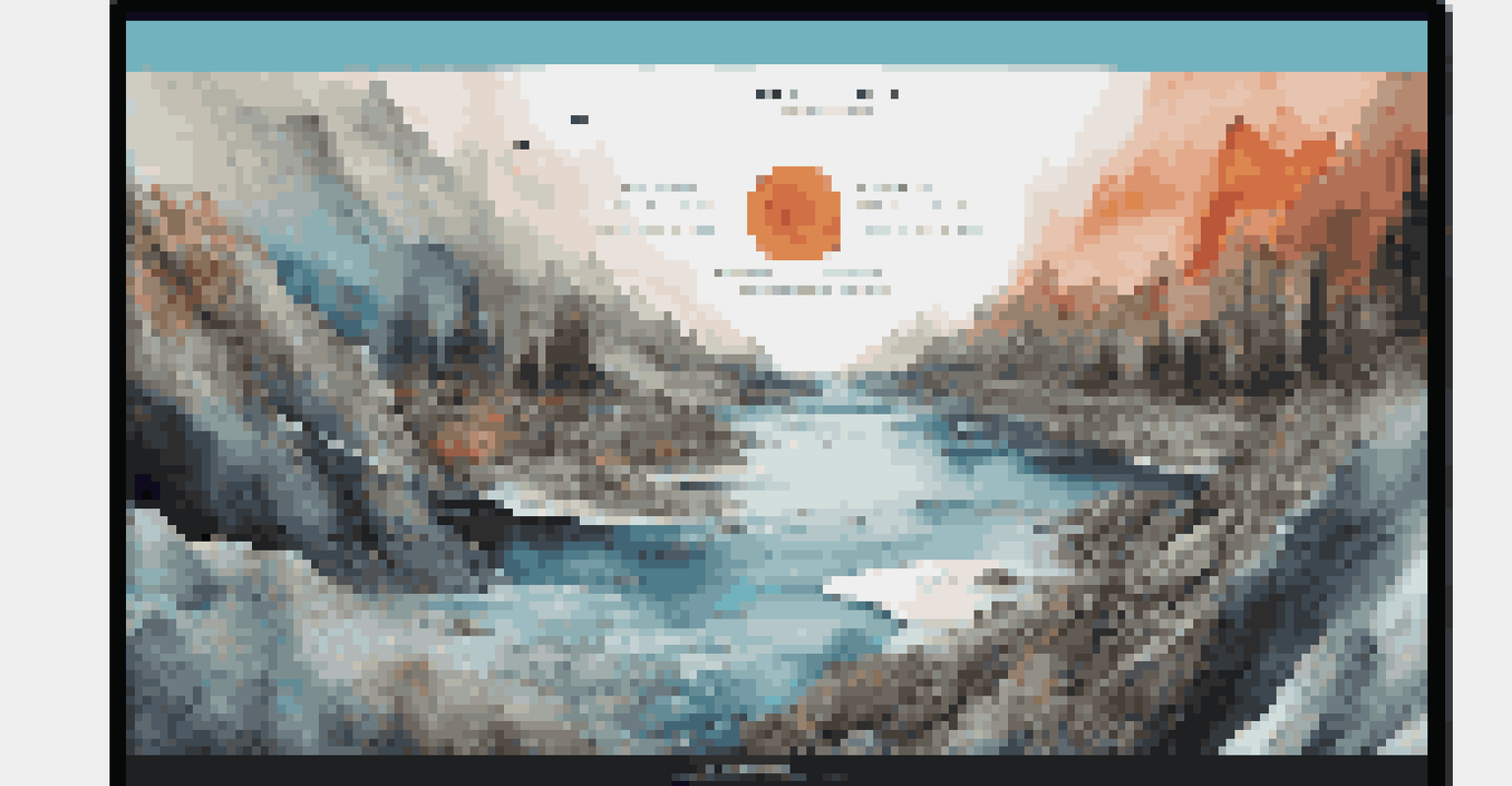Art Exhibitions That Inspire Action Against Injustice

The Role of Art in Social Justice Movements
Art has always been a powerful medium for expressing ideas and emotions, especially in the context of social justice. Throughout history, artists have used their craft to highlight issues like inequality, oppression, and discrimination. By engaging viewers on an emotional level, art can inspire people to take action and advocate for change.
Art is not a mirror to hold up to society, but a hammer with which to shape it.
For instance, the civil rights movement saw artists like Jacob Lawrence using vibrant paintings to tell stories of African American experiences. These works not only documented struggles but also galvanized communities, pushing them toward activism. When art resonates, it has the potential to mobilize individuals and communities for a greater cause.
Moreover, contemporary exhibitions often focus on pressing issues, inviting audiences to reflect on their own roles in society. By presenting art that challenges the status quo, these exhibitions encourage viewers to question their beliefs and consider new perspectives. This dialogue between art and activism is essential for fostering social change.
Highlighting Stories Through Powerful Installations
One impactful way art exhibitions inspire action is through immersive installations that tell compelling stories. These experiences draw audiences in, allowing them to walk through narratives that reflect real-world injustices. For example, the 'One Thousand and One Nights' installation created an emotional space for viewers to confront the refugee crisis.

In installations like this, every element—from visuals to sounds—works together to create a visceral experience. This multi-sensory approach not only captivates audiences but also deepens their understanding of complex issues. When people feel connected to a story, they are more likely to engage and take action.
Art Drives Social Change
Art serves as a powerful medium for expressing social justice issues, inspiring communities to take action.
Such exhibitions can also serve as a call to action, urging visitors to participate in advocacy efforts or support relevant organizations. By transforming viewers into active participants, art installations become powerful tools for promoting social justice and change.
Artists as Activists: Driving Change Through Creativity
Many contemporary artists actively use their platforms to address social injustices. They often incorporate themes of resistance and resilience into their work, provoking thought and encouraging activism. For instance, the artist Ai Weiwei has consistently tackled issues like freedom of expression and human rights through his art.
The role of the artist is to make the revolution irresistible.
His installations, which often include large-scale sculptures and public displays, invite audiences to confront uncomfortable truths. By making these topics accessible, he not only raises awareness but also inspires individuals to advocate for change in their communities. When artists take a stand, they can mobilize others to join the cause.
This intersection of art and activism highlights the responsibility artists have in using their voices for justice. Whether through visual arts, performance, or literature, these creators play a vital role in shaping public discourse and inspiring action against injustice.
Community Engagement: Art as a Collaborative Tool
Art exhibitions that focus on community engagement often encourage collaboration between artists and local activists. These events create a platform for marginalized voices to be heard, fostering a sense of belonging and empowerment. For example, community-based art projects can help highlight local issues, catalyzing discussions around social justice.
By involving community members in the creative process, these exhibitions not only reflect the community's unique experiences but also inspire collective action. This participatory approach can lead to increased awareness and a stronger commitment to addressing injustices at a grassroots level. When people feel a sense of ownership over a project, they are more likely to take action.
Community Collaboration Matters
Engaging communities in art projects fosters empowerment and collective action towards addressing local injustices.
Moreover, such collaborations can break down barriers, uniting diverse groups around common goals. As artists and community members work together, they cultivate a shared vision for a more just society, demonstrating the transformative power of art in creating social change.
Digital Art Exhibitions: A New Frontier for Activism
The rise of digital art exhibitions has opened new avenues for promoting social justice. These online platforms allow artists to reach global audiences, raising awareness about injustices that may be overlooked in traditional settings. For instance, virtual exhibitions can showcase works addressing issues like climate change, racial inequality, or gender rights.
In the digital realm, artists can experiment with interactive elements, engaging viewers in unique ways. This technology-driven approach not only enhances the viewer experience but also encourages deeper reflection on critical societal issues. As audiences navigate these spaces, they are invited to participate in conversations about change and activism.
Additionally, digital exhibitions often enable collaboration across borders, fostering a global dialogue on social justice. By connecting artists and activists worldwide, these platforms can amplify voices and inspire collective action against injustice on a larger scale.
The Impact of Art on Policy Change
Art has the potential to influence policy change by raising awareness and shaping public opinion. When exhibitions highlight specific issues, they can capture the attention of policymakers and encourage them to address these concerns. For example, artwork focusing on environmental degradation can lead to discussions about sustainable practices and legislation.
Moreover, artists often collaborate with advocacy groups to create campaigns that drive policy reform. By utilizing their creative talents, they can craft messages that resonate with the public and lawmakers alike. This strategic approach can mobilize supporters and create pressure for change, demonstrating the power of art in the political arena.
Digital Platforms Expand Reach
Digital art exhibitions provide global visibility for social justice themes, encouraging worldwide dialogue and activism.
Ultimately, the relationship between art and policy is a dynamic one, where exhibitions can serve as catalysts for dialogue and action. As artists continue to address social injustices through their work, they contribute to a broader movement advocating for meaningful change.
Inspiring Future Generations Through Art Education
Art education plays a crucial role in inspiring future generations to engage with social justice issues. By teaching students about the power of art as a form of expression, educators can cultivate awareness and empathy in young minds. This foundation encourages future artists to use their skills to address injustices and advocate for change.
Programs that incorporate social justice themes into art curricula help students connect their creativity with real-world issues. Projects that involve community engagement or activism can empower students to take action and use their voices for good. When students see the impact of their art, they are more likely to become lifelong advocates for social change.

Furthermore, integrating art and activism in education fosters critical thinking and encourages students to explore diverse perspectives. This holistic approach not only nurtures creativity but also equips future generations with the tools needed to challenge injustice and make a meaningful impact in their communities.